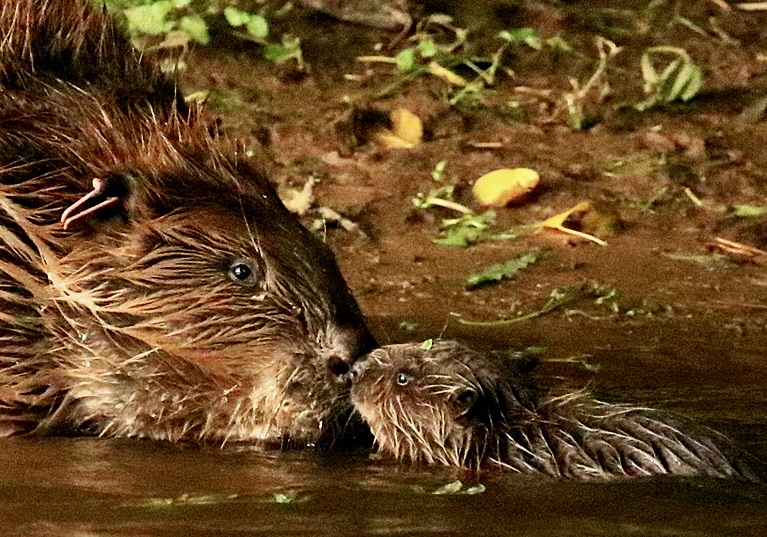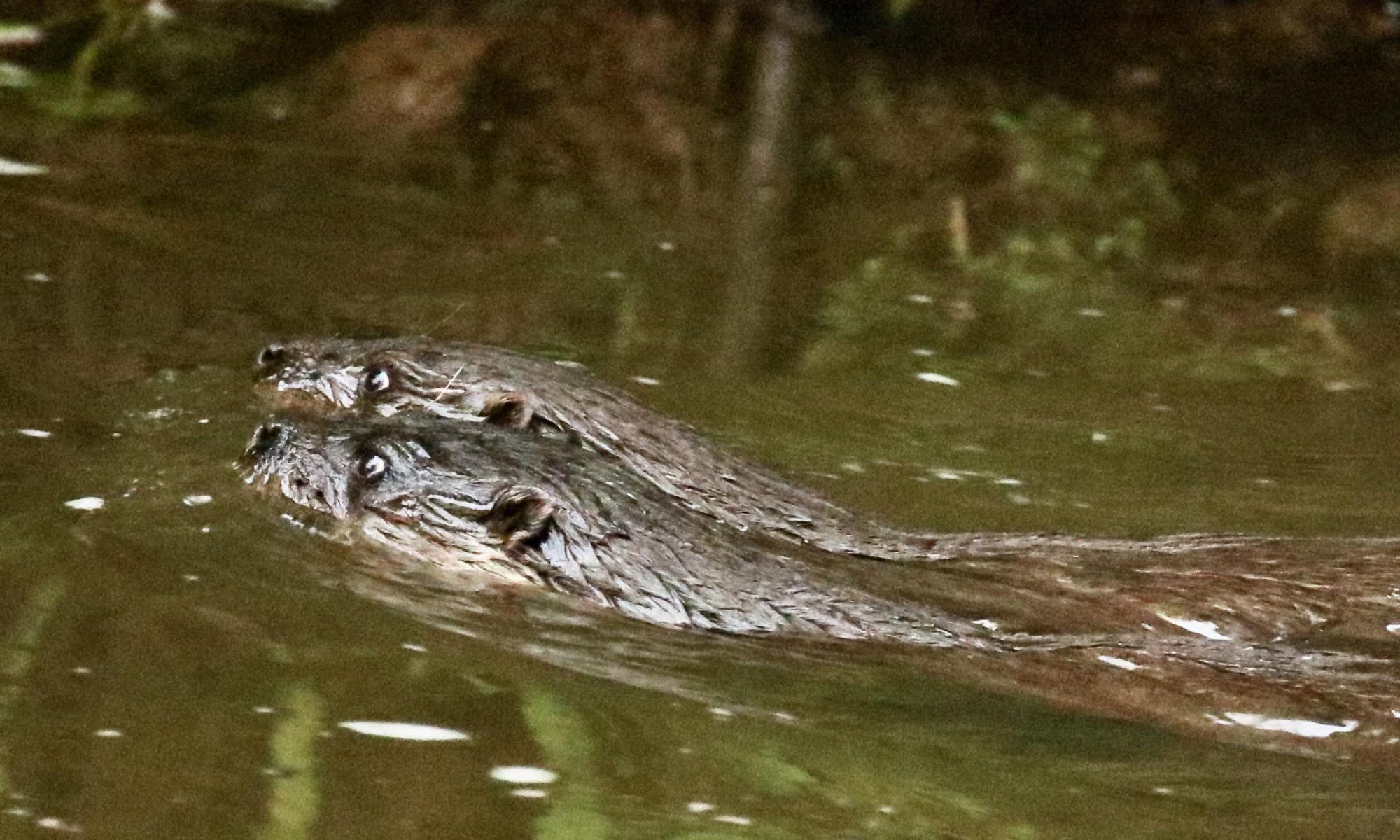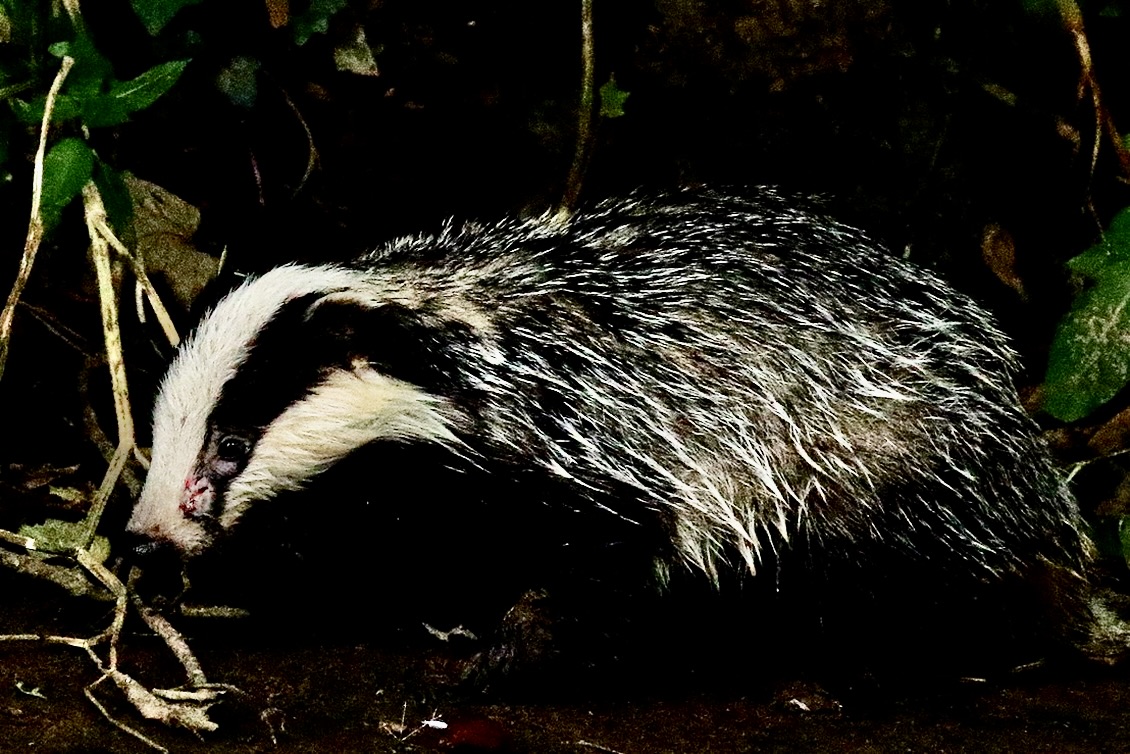Author: David R. White, Naturalist
I have spent many hours down by the river Otter watching and waiting, very much hoping to gain various insights into our local beaver activities. Most of my interesting sightings occur close to dawn and dusk – which inevitably poses challenges for photographing at these times. Listed below are a selection of examples of their activities:
 |
|
Beavers do spend time grooming their fur. During these times, spreading oil from their castoreum gland at the base of their tail to keep their fur waterproof. Both adults and juveniles will mutually groom. Sometimes, before mutual grooming starts, they appear to greet each other – which often includes touching noses! No doubt checking each other’s odours to confirm family membership. It is heart-warming to witness their behaviour – particularly between Mum and small kit.
 |
When the young beaver kits are seen in the water, I realised on these occasions that I had many more sightings than I would normally expect. Frequently when otters are fishing, they appear to “porpoise” under water on their own. Otters seen near young beaver kits were swimming in pairs, fast on the surface. They appeared hyper-alert and obviously not fishing. I believe that they were opportunistically hunting, hoping to predate an unattended beaver kit. Such potential predation of their kits makes adults aggressively defend their kits – and it why dog owners are asked to discourage their dogs from the river at these times.
 |
One morning, at dawn, I watched a badger come down to the river to drink. It then moved off up a steep riverside bank, lost its footing and fell some 10 to 12 feet into the water below. ON the way it hit and broke a dead branch. All this commotion immediately attracted the attention of the adult male beaver some 30 yards away. He very rapidly swam towards the badger and, without hesitation, attacked the badger. He inflicted a bite to its nose and possible a leg. The beaver then promptly realised that the badger posed no threat to him or his family and swam off. The confused badger swam around in several circles before it left the water and limped off.
Female beavers have four teats and usually give birth to between 2 and 4 kits. One year “pink tag” mum had 5 kits. The smallest was always last to feed and was very slow to gain weight. I guessed, within a couple of months, the largest and most confident litter kit was more than twice its size. This smallest kit did survive the winter, but s a much smaller animal than is usual. The following spring Mum had 3 kits and I was astonished to see Mum allowing the smallest kit from the previous year to suckle with her new siblings.
One year, as summer progressed, we experienced an extended dry spell resulting in a significant drop in the water level in the river. Very early one morning I was watching at the entrance to the beavers’ burrow – which is underwater. The adult female beaver was frequently diving in the river bed and surfacing with a melon-sized lump of mud. Each time this was deposited on the river bank some distance away. I discussed this behaviour with a local expert – he was sure the beaver was increasing the depth of water to the burrow entrance. In effect, creating an underwater canal to allow underwater access during the lowered water levels. He also told me that if this action failed to achieve the desired result, it was very likely to trigger dam-building downstream from the burrow entrance, to achieve the same effect.
There is still much to learn about beavers, a keystone species; the impact they have on the area where they live, and how many species can benefit from their presence. Much more information is easily accessible on the internet.
PS: Did you know that several local groups / individuals offer evening walks to see our beavers during the late Spring and Summer period?
